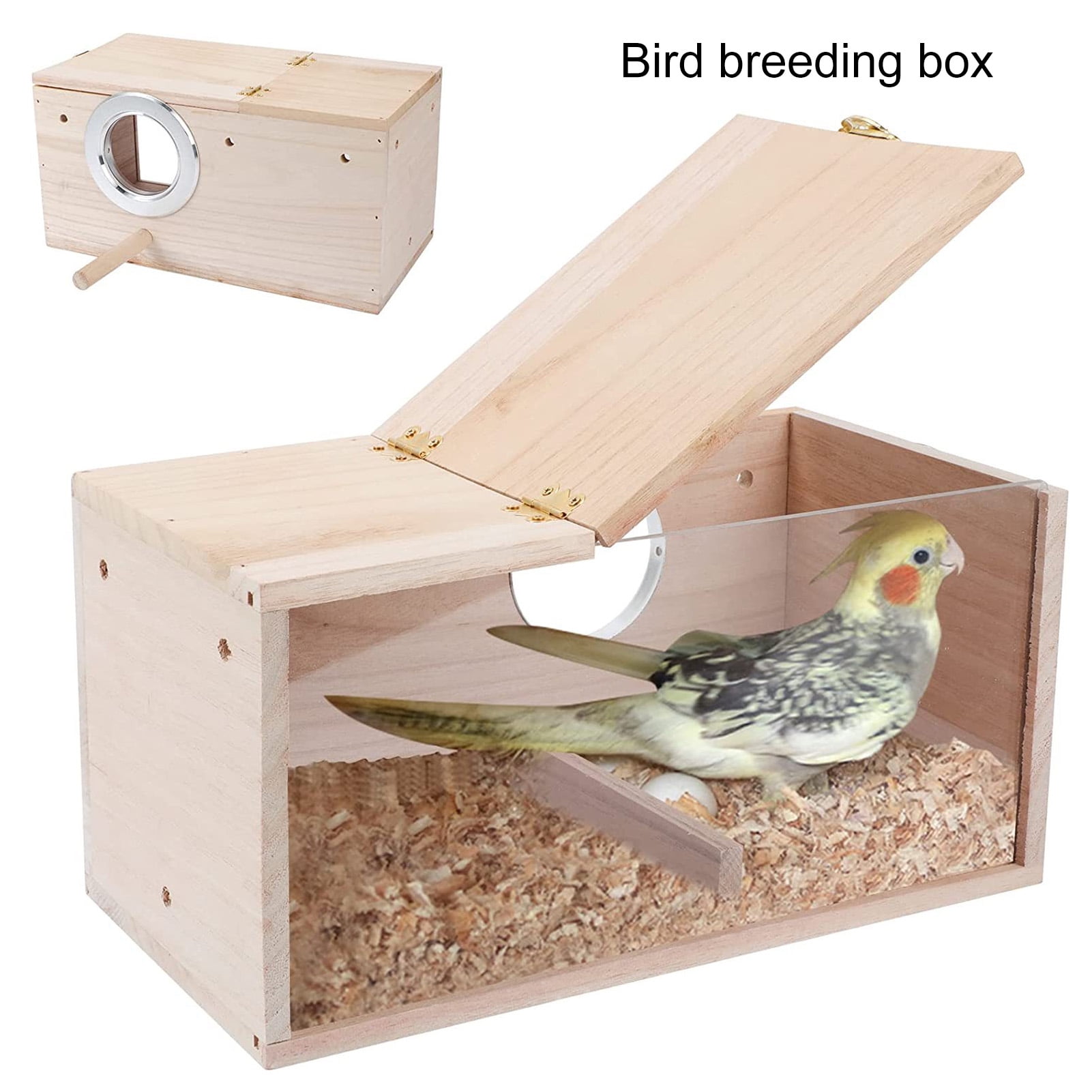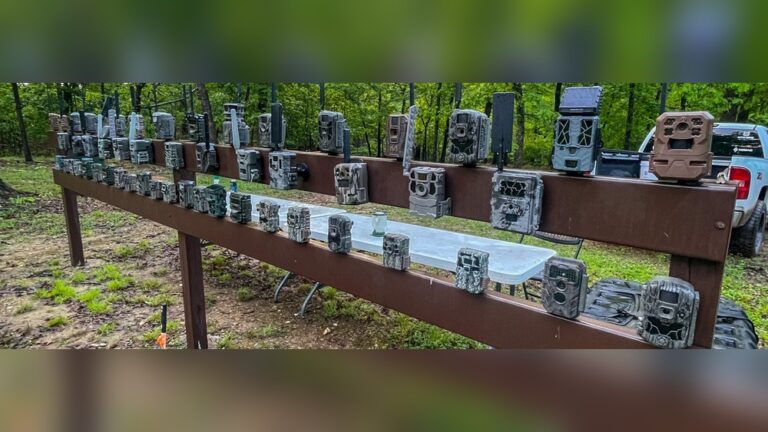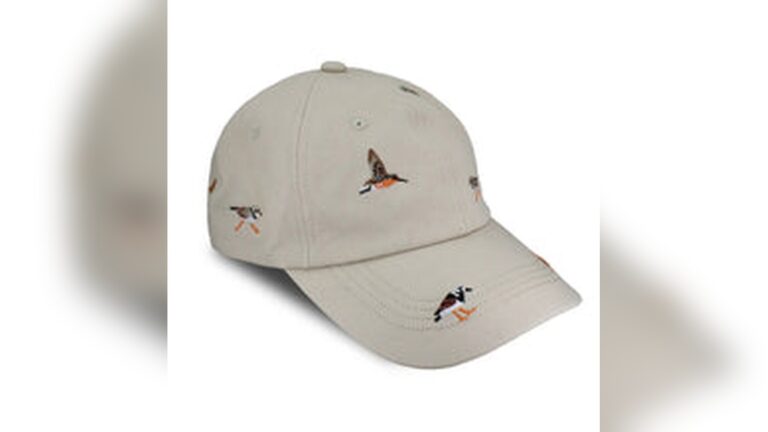Cockatiel Bird Nest Box Size
If you want your cockatiel to feel safe and comfortable, choosing the right nest box size is essential. A poorly sized nest box can cause stress, affect breeding success, and even harm your bird.
But how do you know what size is just right for your cockatiel? You’ll discover everything you need to pick the perfect nest box size that keeps your feathered friend happy and healthy. Keep reading to learn the simple but crucial details that can make all the difference for your cockatiel’s home.

Credit: www.amazon.com
Ideal Nest Box Dimensions
Cockatiels need a nest box that fits them well. The right size gives them comfort and security. A good nest box helps them lay eggs and raise chicks safely. This section explains the ideal nest box dimensions for cockatiels.
Length And Width Recommendations
The nest box should be about 12 inches long and 8 inches wide. This size gives cockatiels enough space to move inside. It is not too big or too small. A tight fit helps keep the eggs warm.
The entrance hole should be about 1.5 inches wide. This size keeps the bird safe from predators. It also lets the cockatiel enter and exit easily.
Optimal Height For Cockatiels
The height of the nest box should be around 12 to 14 inches. This height allows the cockatiel to stand and turn around inside. It gives enough room for nesting material.
Too tall a box may make the bird feel unsafe. Too short can make it hard to fit eggs and chicks. The right height keeps the bird calm and secure.
Material Choices For Nest Boxes
Choosing the right material for a cockatiel bird nest box is very important. The material affects the bird’s comfort and safety. It also impacts how long the nest box will last. Some materials work better than others. The right choice helps create a cozy home for your cockatiel.
Best Wood Types
Wood is the top choice for cockatiel nest boxes. It is natural and safe for birds. Cedar and pine are popular options. Cedar resists moisture and insects well. Pine is light and easy to handle. Both woods provide good insulation. They keep the nest warm in cool weather. Avoid treated wood that may have chemicals. Untreated wood is the safest for your bird.
Avoiding Harmful Materials
Some materials can harm cockatiels. Avoid plastic, metal, and treated wood. Plastic traps heat and can cause overheating. Metal gets too hot or cold quickly. Treated wood may contain toxic chemicals. These can hurt the bird’s health. Paints and varnishes also pose risks. Use only non-toxic, bird-safe finishes. Safe materials help keep cockatiels healthy and happy.
Entrance Hole Size
The entrance hole size is a key factor for a cockatiel’s nest box. It controls who can enter and keeps the nest safe. Too big a hole allows predators or other birds inside. Too small, and cockatiels might not fit comfortably. The right size helps cockatiels feel secure and protected.
Suitable Diameter For Cockatiels
The entrance hole should be about 1.5 to 2 inches wide. This size lets cockatiels enter easily. It stops bigger birds and animals from getting in. A round hole works best for their shape and flight. Avoid making the hole too large or too small.
Placement Of The Entrance
Place the entrance hole near the top of the nest box. This position keeps the nest dry during rain. It also gives cockatiels a safe spot to watch for danger. Avoid placing the hole too low or too close to the floor. Proper placement improves comfort and security.

Credit: vmpetsmart.com
Interior Design Features
The interior design of a cockatiel bird nest box affects the bird’s comfort and safety. Small details inside the nest box matter a lot. Birds need a cozy, clean place to lay eggs and raise chicks.
Good interior design helps keep the nest dry and warm. It also makes cleaning easier for bird owners. Proper features inside the box support the bird’s natural behavior and health.
Flooring Options
The floor should be sturdy and easy to clean. Wood is a common choice because it feels natural to birds. Avoid slippery surfaces that can hurt their feet or eggs.
Adding a soft layer of nesting material helps keep eggs safe. Some use coconut fiber or shredded paper. These materials absorb moisture and provide warmth.
Ventilation And Drainage
Proper air flow is essential inside the nest box. Small holes near the top allow fresh air to enter without causing drafts. Good ventilation prevents mold and keeps air fresh.
Drainage holes at the bottom help remove any water that gets inside. This stops moisture buildup, which can harm eggs and chicks. Keep these holes small enough to prevent predators from entering.
Placement And Installation Tips
Proper placement and installation of a cockatiel bird nest box are key to attracting birds and keeping them safe. The right spot helps birds feel secure and comfortable. Careful setup also protects the nest from predators and weather.
Height From Ground
Place the nest box at least 5 to 6 feet above the ground. This height keeps the nest away from many ground predators. It also helps the birds watch for danger. Avoid placing the box too high, as cockatiels prefer easy access.
Safety Considerations
Choose a quiet, sheltered spot for the nest box. Avoid areas with strong wind or direct sun. Keep the box away from busy human paths and noisy places. Make sure the box is stable and won’t swing or fall. Use predator guards to stop raccoons or cats. Good safety helps cockatiels raise their chicks successfully.
Cleaning And Maintenance
Cleaning and maintenance are key to keeping your cockatiel’s nest box safe and healthy. A clean nest box helps prevent diseases and keeps birds comfortable. Regular care also extends the life of the nest box.
Removing waste and old nesting material stops bad smells and pests. It creates a fresh space for your cockatiel to rest and lay eggs. Proper maintenance makes your bird’s home a cozy place.
Frequency Of Cleaning
Clean the nest box at least once a week. Check more often during breeding season or if it looks dirty. Remove droppings and leftover food every few days. A clean box reduces bacteria and keeps birds healthy.
Tools And Techniques
Use a small brush or cloth for cleaning inside the box. Warm water and mild soap work well for washing. Avoid strong chemicals that can harm birds. Rinse the box thoroughly and dry it before use. Replace old nesting material with fresh, soft bedding every time you clean.
Signs Of Nest Box Suitability
Knowing if a cockatiel nest box fits well is key for happy birds. Signs of nest box suitability help you see if the birds feel safe and cozy. These signs show if the size, shape, and location of the box are right. Watch the birds and the nest to find these clues.
Behavioral Indicators
Cockatiels show many behaviors that reveal their comfort with the nest box. They enter and exit the box often, exploring inside carefully. If they spend time inside without stress, it means they like the space. Birds may bring soft materials to the box for lining. This action shows they find the box suitable for nesting. Quiet singing or gentle calls near the box also signal comfort. Avoid boxes that cause birds to hesitate or stay away.
Physical Signs In The Nest
Look inside the nest box for clear physical signs of use. A good nest box will have soft lining materials like feathers or plant fibers. These materials show the birds prepared the space for eggs. Check for clean and dry nesting areas, which mean the box protects well against weather. Signs of droppings near the entrance suggest frequent visits. Broken or scratched wood inside the box shows active use. A nest box with these signs is usually the right size for cockatiels.

Credit: www.walmart.com
Common Nest Box Mistakes
Choosing the right nest box for your cockatiel is very important. Many bird owners make common mistakes that affect the bird’s comfort and safety. These errors often stop cockatiels from nesting well or cause stress. Understanding these mistakes helps you create a better home for your pet bird.
Wrong Size Issues
Using a nest box that is too big or too small causes problems. A small box limits the bird’s movement. It may feel trapped or uncomfortable. A box that is too large makes the bird feel unsafe. Cockatiels prefer cozy spaces where they can feel secure. The right size fits one or two birds comfortably. It allows space for eggs and chicks but is not too roomy.
Improper Placement Problems
Placing the nest box in the wrong spot causes stress to cockatiels. A box placed in a noisy or bright area makes birds nervous. They prefer quiet, dim places that mimic natural nesting sites. Avoid placing the box near direct sunlight or drafts. The entrance hole should face away from strong light or wind. Proper placement keeps the birds calm and encourages nesting.
How Smart Pets Lover Can Help You with Cockatiel Bird Nest Box Size
Learning Through the Right Cockatiel Nest Box Size
Understanding the ideal nest box size for your cockatiel is more than just a measurement exercise—it’s a gateway to deeper care and connection. When you thoughtfully consider entrance hole size and interior design features, you’re not just building a home; you’re creating a safe, comfortable environment that supports natural behaviors and breeding success. This hands-on approach encourages observation skills and patience, turning routine maintenance into meaningful learning moments.
- Notice how your bird interacts with the nest box—signs of suitability often reveal themselves subtly.
- Explore placement and installation tips to see how environment influences your cockatiel’s comfort and security.
- Regular cleaning and maintenance teach responsibility and highlight the importance of hygiene in bird health.
At Smart Pets Lover, we believe that every detail—from material choices to proper sizing—helps pet parents feel confident and connected. For questions or expert advice, reaching out to bird care communities or avian specialists can be a great way to expand your knowledge while nurturing your feathered friend’s well-being.
Frequently Asked Questions
What Is The Ideal Size For A Cockatiel Nest Box?
The ideal nest box size for a cockatiel is about 12x12x12 inches. This size offers enough space for comfort and egg laying. Proper ventilation and a secure entrance are important. A box too large or small can stress the bird.
How Deep Should A Cockatiel Nest Box Be?
A cockatiel nest box should be around 12 inches deep. This depth provides safety and comfort for eggs and chicks. It prevents the birds from falling out. Depth also helps maintain warmth and humidity inside the box.
What Entrance Hole Size Suits A Cockatiel Nest Box?
The entrance hole size should be about 2 to 2. 5 inches in diameter. This allows easy access for cockatiels while keeping larger predators out. Correct sizing helps the bird feel secure and encourages nesting behavior.
Can I Use A Plastic Box For Cockatiel Nesting?
Wooden boxes are preferred over plastic for cockatiel nests. Wood offers better insulation and breathability. Plastic can trap moisture, causing mold and discomfort. If plastic is used, ensure good ventilation and cleanliness.
Conclusion
Choosing the right nest box size helps your cockatiel feel safe and comfortable. Small boxes can cause stress, while too big may not keep warmth. A box around 12 by 12 by 12 inches fits most cockatiels well. Soft bedding inside adds coziness.
Regular cleaning keeps the nest healthy. Watch your bird’s behavior for signs of comfort or trouble. A good nest box supports happy breeding and healthy chicks. Simple care makes a big difference for your pet’s well-being. Keep these tips in mind for a happy cockatiel home.







